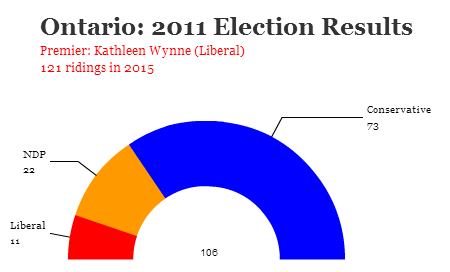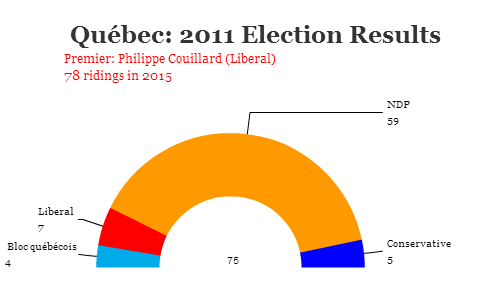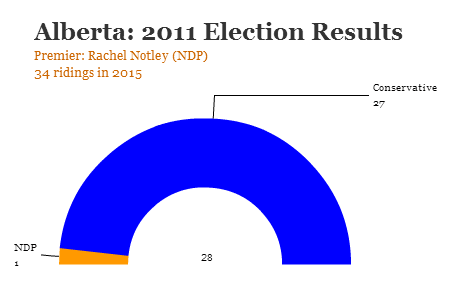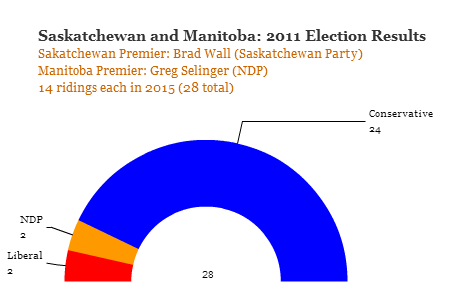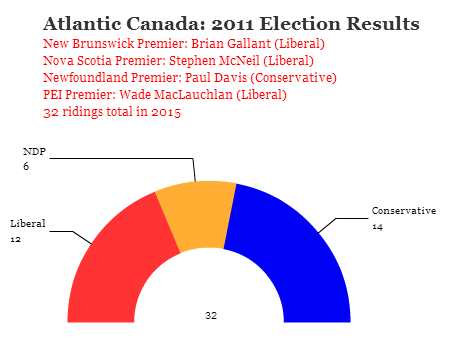
One of the reasons why it’s so hard to predict the results of tonight’s federal election in Canada is the diversity of political views across a country that contains 10 provinces and three territories across over 3.85 million square miles. ![]()
By the time the last polls close at 7 p.m. Pacific time, we may already have a good idea of who will lead Canada’s next government. Or we may be waiting into the wee hours of the morning as results from several hotly contested British Columbia ridings.
With plenty of three-way races pitting the Conservative Party of prime minister Stephen Harper against both the Liberal Party of Justin Trudeau and the New Democratic Party (NDP) of opposition leader Thomas Mulcair, there’s room for plenty of fluidity on a riding-by-riding basis. The contest is even less predictable because it’s the first election to feature an expanded House of Commons that will grow from 308 to 338 seats.
All of this means that as returns come in, it’s important to know what to expect from each region of Canada, where political views vary widely.
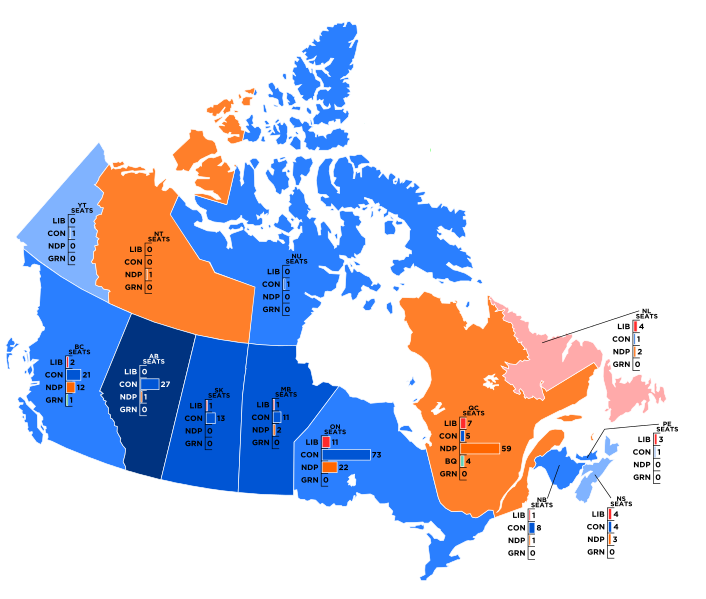
*****
Ontario
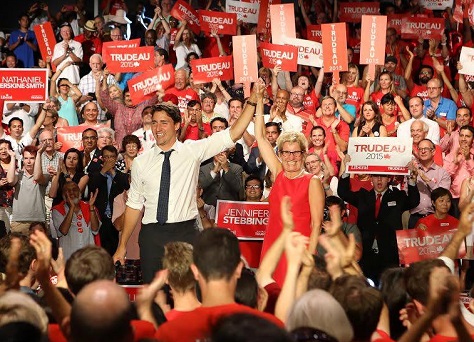
The most important battleground of them all, governments are won and lost in the country’s most populous province. Since the 2011 election, Canada has added 30 seats to the House of Commons, and 15 of those new seats are in Ontario, giving the province 121 of the 338 ridings across the country.
Even at the height of the NDP’s popularity in July, August and early September, polls throughout the province showed that it was always the weak underbelly of the NDP dream to lead a federal government. Part of that is due to demographics (rural voters will still vote Conservative, and downtown Toronto remains one of the few truly Liberal bastions) and part of it is due to the lasting memory of Ontario’s sole NDP-led provincial government of premier Bob Rae. It didn’t go well, and there’s still a handicap for the NDP here because of it, notwithstanding Rae’s jump to national politics as a Liberal heavyweight and its interim leader from 2011 to 2013.
Ontario’s Liberal premier Kathleen Wynne, whose provincial-level plan to supplement the pensions of Ontario’s retired workers has attracted Harper’s ire, has enthusiastically supported Trudeau.
With so many three-way seats up for grabs here, each party is trying to maximize the support of its base, which explains why Harper’s final rally in the province featured former Toronto mayor Rob Ford, whose ‘Ford Nation’ political base in the more suburban boroughs of Toronto, like Etobicoke and Scarborough, could push the Conservatives over the edge in a close race.
Key ridings to watch:
- Spadina-Fort York: A classic downtown Toronto riding that should easily be Liberal territory, it’s a contest between Adam Vaughn, who a by-election in 2014. His opponent is Olivia Chow, a former MP who represented a similar riding before reapportionment. The widow of the NDP’s late leader, Jack Layton, Chow finished far behind in third place in Toronto’s mayoral election last year. If Chow returns to the House of Commons, it will be a moral victory for the NDP, though critics snarked that Mulcair would have done better to have convinced Vaughan to cross the aisle and join the NDP instead.
- Vaughan-Woodbridge: Former minister of veteran affairs Julian Fantino is trying to hold this riding for the Conservatives.
- Scarborough Southwest: A classic three-way race in 2011, the NDP’s Dan Harris narrowly won in 2011 with just 35% of the vote. This time around, he faces a far more formidable challenge from former Toronto police chief Bill Blair.
- Ottawa West-Nepean: John Baird, the former openly gay foreign minister who stepped down in the last term, once held this seat for the conservatives. If the Tories lose this seat, it is a strong sign that it will not be a great night for Harper.
- Eglinton-Lawrence: If any ‘big beasts’ of the Harper government lose their seats tonight, it could be finance minister Joe Oliver, who faces a tough fight against Liberal Marco Mendicino and the NDP candidate Andrew Thomson, a former Saskatchewan finance minister.
- Etobicoke Centre: The contest pits Conservative MP Ted Opitz against former Liberal MP Borys Wrzesnewskyj. A good test of the enduring power of ‘Ford Nation’ if Opitz can hold the seat.
- Ajax: A 2011 rematch between Chris Alexander, minister of citizenship and immigration and former Liberal MP Mark Holland.
- Kitchener Centre: A class three-way race for a seat currently held by Conservative MP Stephen Woodworth. A weathervane for Ontario and Canada as a whole.
*****
Québec
You have to go back to the 2000 election to find a time when Québec was this competitive in a federal Canadian election. Throughout the honeymoon phase of Trudeau’s rise to the Liberal leadership, it was in Québec where the NDP continued to hold a seemingly invincible lead.
Fortress Québec, however, has cracked, and the NDP is now battling the Liberals for first place in the province. The Conservatives, having made a strong case against the wearing of the niqab (a wedge issue in the province’s most recent election), stand a strong chance of doubling their disappointing 2011 totals. Ironically, after four consecutive failures to break through (Harper’s best is 10 seats), the Conservatives could win more ridings than at any time in the Harper era.
The separatist Bloc québécois (BQ), having been reduced from over 50 seats to just four after the last election (and now, after defections, holding just two seats) hope to place well enough so that they don’t fall completely into extinction, and former leader Gilles Duceppe returned to lead the part in June to boost its chances. Still, for a party that once dominated the province, it is attracting barely 20% of the vote, and it risks finishing in a disappointing fourth place — it finished a far second to the NDP in 2011. If the Bloc doesn’t win at least a handful of seats, it could spell the end for the part, a major setback to the swindling band of separatists whose vision of an independent Québec is fading.
Key ridings to watch:
- Laurier-Sainte Marie: Duceppe lost his riding in the disastrous 2011 election to NDP neophyte Hélène Laverdière, who has become one the NDP’s more impressive members and a leading spokesperson on international affairs. A shock poll gave her the lead in the middle of the campaign, but it would be devastating for Duceppe to lose his riding twice in a row, and a Duceppe loss would decapitate any serious effort to rebuild the Bloc in the years ahead.
- Outremont: As the NDP has lost vote share in the province, several NDP strongholds have become closer. None is so stunning as Mulcair’s own riding, where he could face defeat to the Liberal challenger, attorney Rachel Bendayan.
- Ahuntsic-Cartierville: Maria Mourani is one of the four Bloc candidates who actually won in the 2011 election. But the choice of the hardline Mario Beaulieu as Bloq leader in 2014 led her to defect to the NDP instead. She’ll be running against Mélanie Joly, a Liberal and the runner-up in Montreal’s 2013 mayoral election.
- Mont-Royal: A rare chance for a Conservative pickup in Montreal. Liberal MP Irwin Cotler’s retirement means that this open riding could be a pickup for Conservative candidate Robert Libman, where a strong Jewish population could decide the outcome.
- Louis-Saint-Laurent: Another chance for a Conservative pickup, this time in Québec City, traditionally the most conservative part of the province. Gérard Deltell, a former journalist and member of the provincial assembly from the center-right Coalition avenir Québec, this could cap off a night of gains for the Conservatives.
*****
British Columbia
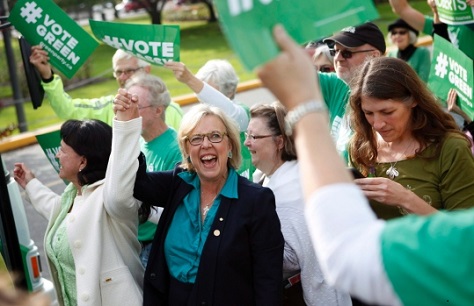
If the election is tighter than expected, British Columbia could well determine the result — or whether Canada will have a majority or minority government. Even while the New Democrats have lost support across the country, it’s still a tight three-way race in British Columbia, and the Green Party’s strongest footprint is also here. Environmental issues play an outsized role here (including positions on proposed oil pipelines to the Pacific coast). A surge of conservative Chinese and Indian immigrants unexpectedly boosted Harper in the 2011 election, and they could help the Conservatives hold on to most of their ridings in 2015.
Key ridings to watch:
- Victoria: Green Party leader Elizabeth May would love to pick up this riding, which would give her a colleague in the House of Commons. The Greens narrowly lost this seat in a 2012 by-election, and this year’s contest is a showdown between Green candidate Jo-Ann Roberts, a former CBC radio presenter, and NDP MP Murray Rankin.
- Vancouver Granville: An entirely new riding, this could go to any of the three major parties, including Jodh Wilson-Raybould, the regional chief of the Assembly of First Nations. Had it existed in 2011, it would have been a Conservative pickup.
- Vancouver South: Conservative MP Wai Young won this riding in an upset in 2011 against former provincial premier, Liberal Ujjah Dosanjh. Again, it’s a tossup among the three major parties.
*****
Alberta

It was Rachel Notley’s from-behind victory in May’s Albertan provincial elections that made Canadians take notice of the NDP nationally. After all, if the NDP can dislodge a 44-year government in Alberta, the socially conservative and oil-rich Tory heartland, why couldn’t Mulcair become prime minister? Unfortunately for Mulcair, there’s no chance that the NDP will sweep all of Alberta’s 34 ridings. But in Edmonton and Calgary, both the Liberals and the NDP will hope to make gains at Harper’s expense.
Key ridings to watch:
- Calgary Centre: Long before Notley’s win earlier this year, it was the Liberals who nearly won this riding in a 2012 by-election. Conservative MP Joan Crockett hopes to hold off former Liberal provincial MLA Kent Hehr.
- Calgary Skyview: Watch this riding as another Liberal pickup (former MLA Darshan Kang is running) from Conservative MP Devinder Shory.
- Edmonton Centre: Nowhere was more pro-NDP in May than Edmonton, so a weak showing here would be an embarrassment to both the federal and provincial NDP. It’s an open seat, and is proving a tough three-way race among Conservative James Cumming, Liberal Randy Boissonnault and the NDP’s Gil McGowan.
- Edmonton Griesbach: Another potential pickup for the NDP.
*****
Saskatchewan and Manitoba
In 2011, the prairie provinces delivered overwhelmingly to Harper’s Conservatives, and no one doubts that the Conservatives will do well there again in 2015. Both the NDP and the Liberals, however, are hoping to be competitive in at least a handful of mostly urban-based ridings.
Saskatchewan premier Brad Wall, a center-right figure and one of the most popular politicians in the country, hasn’t endorsed any of the parties, though he is most sympathetic to the Conservatives. His Saskatchewan Party draws support from the old Progressive Conservatives and moderate Liberals alike. If Harper steps down after today’s election, Wall could become a top candidate to succeed him as the national Conservative leader. Despite a disappointing turn in the polls for the NDP, the party could still do very well, especially in and around Regina. It was Saskatchewan, after all, where the NDP’s predecessor first took power and introduced the precursor to what would become Canada’s universal health care system.
In Manitoba, NDP premier Greg Selinger is one of the most unpopular premiers in Canada, and protests last year made it abundantly clear. That could complicate the national NDP’s efforts to make gains here.
Key ridings to watch:
- Regina-Lewvan: Another ‘new’ riding, the NDP would have won this seat in 2011, and Erin Weir, a labor economist and former provincial NDP leadership candidate, hopes to do so in 2015. A leading indicator for the NDP in Saskatchewan.
- Saint Boniface–Saint Vital: Currently held by Shelly Glover, a former Conservative cabinet member, this open seat seems like it could be a strong pickup for Liberal candidate Dan Vandal. A leading indicator for the Liberals in Manitoba.
*****
Atlantic Canada
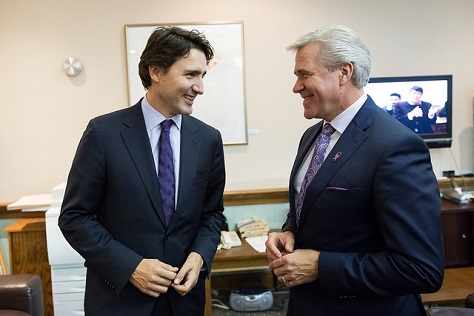
Traditionally poorer than the rest of Canada with the demise of the fishing industry, the four maritime provinces are surging, in part, due to tourism, offshore oil exploration and renewable energy. The region has also traditionally been a key Liberal heartland, and though it’s home to just 32 ridings, the Liberals won nearly a third of their seats in the 2011 election here. It’s certain that they will expand that number in 2015, restoring their lock over the region.
One wrinkle to keep in mind is that Newfoundland and Labrador will face provincial elections on November 30, and Liberal leader Dwight Ball is heavily favored to sweep to power, ending nearly a decade and a half of conservative rule that began with the feisty former premier Danny Williams. That pent-up energy could boost Liberals in today’s election.
Key ridings to watch:
- Central Nova: This is the riding of outgoing MP Peter MacKay, the last leader of the Progressive Conservative Party (before its merger with Harper’s Canadian Alliance) and a popular defense minister and justice minister. A Liberal pickup could dash hopes for MacKay’s eventual return as a potential Conservative leader.
- Fredericton: Conservative MP Keith Ashfield, a former cabinet member, will face a tough fight in New Brunswick’s capital city, where francophone voters could easily tilt toward the NDP or Liberals. An early indicator of how dominant the Liberals are in the region and in the country in general (and also an early test for Green support).
- Egmont: Gail Shea, the only Conservative MP on Prince Edward Island, faces a tough race against former NDP provincial leader Herb Dickieson and Liberal Bobby Morrissey.
